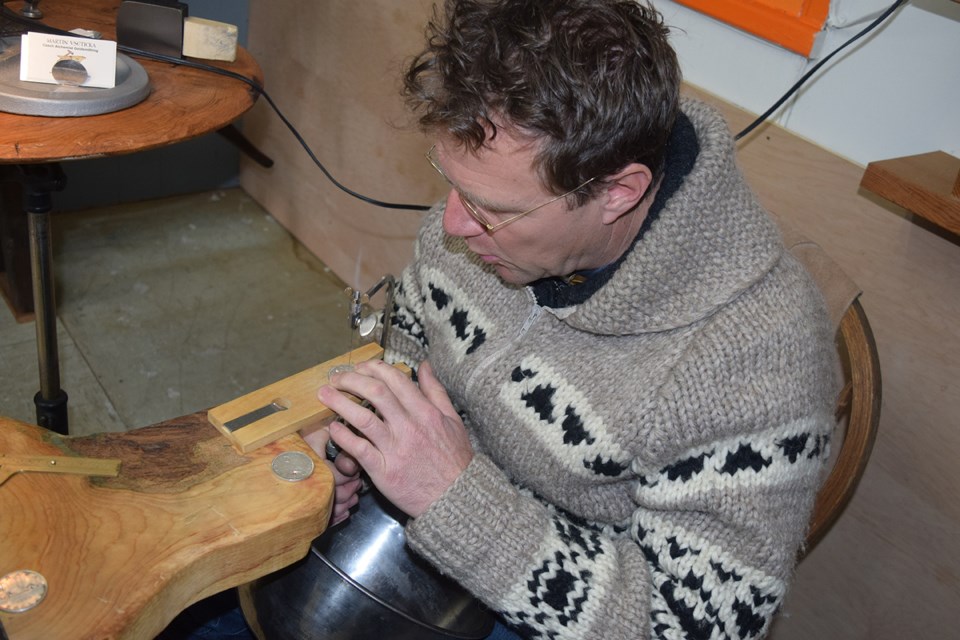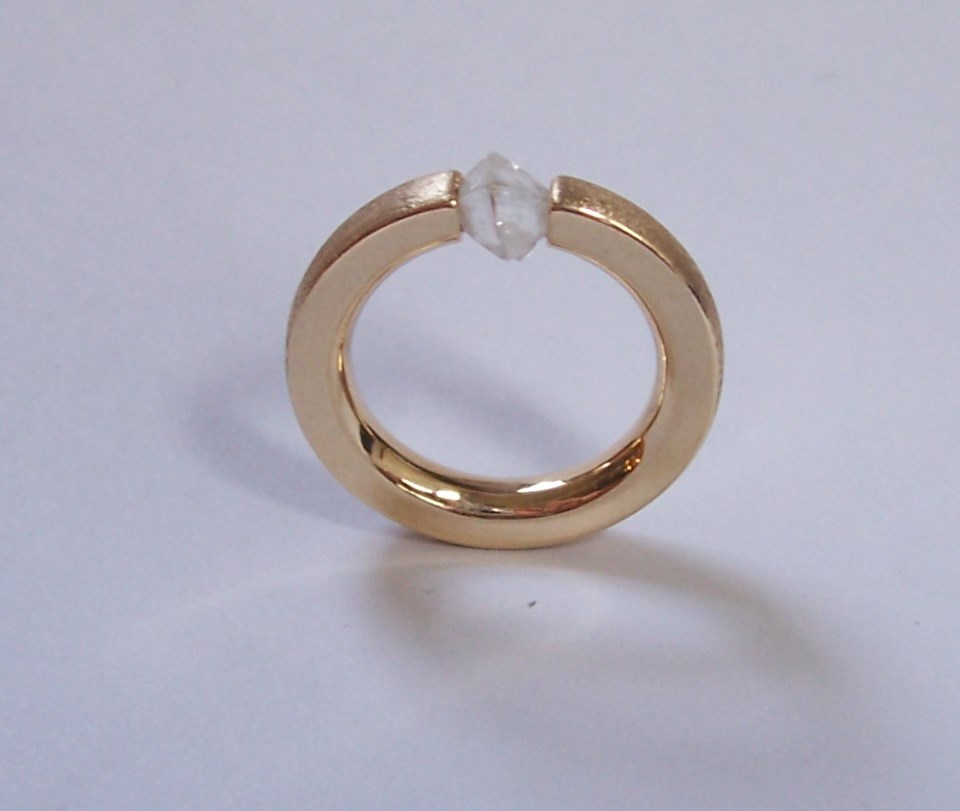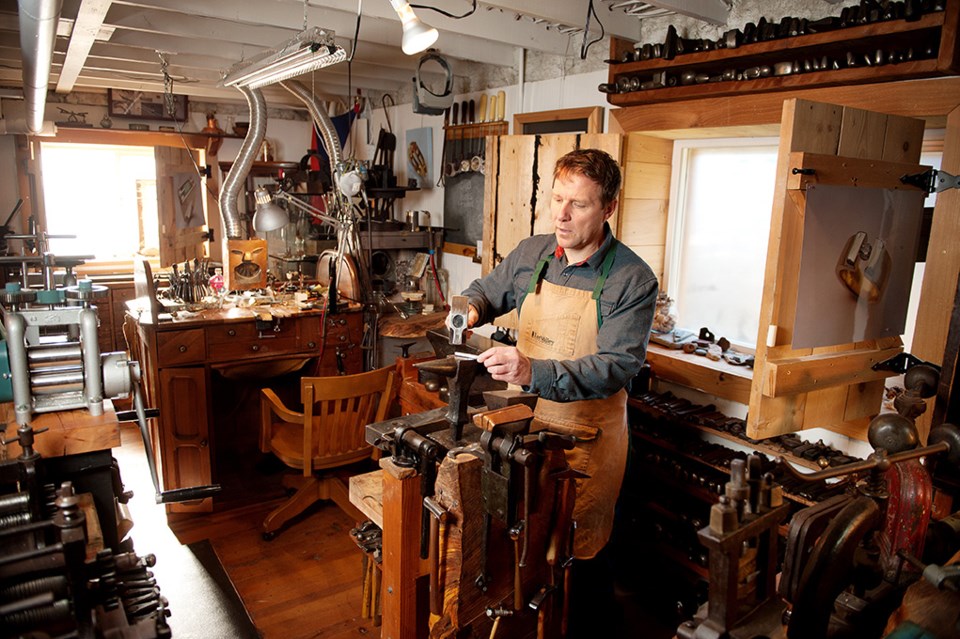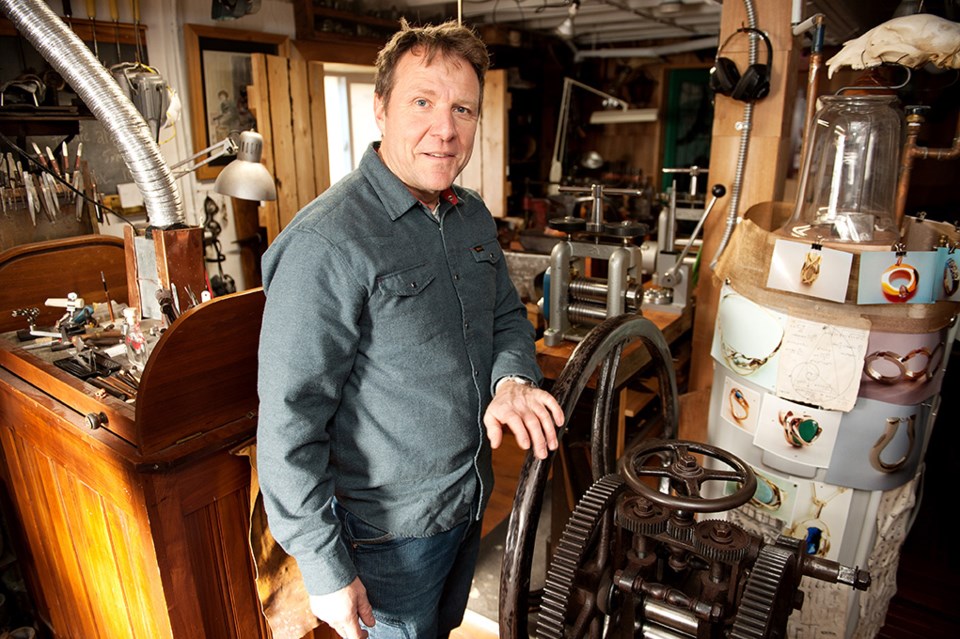Martin Vseticka is carrying on a proud family tradition in his studio space across from the Squamish Valley Golf course.
Vseticka, of Czech Alchemist Goldsmithing, is a journeyman gold and silversmith, as was his grandfather.
The business name comes from the family's Czech heritage and the story of alchemy on Prague Castle's Golden Lane — a row of small shops and houses attached to the walls of the castle. Historically, this was where the castle's goldsmiths lived.
The Chief visited Vseticka at his studio for a chat about his Czech ancestry, his craft and his life in Squamish.
What follows is an edited version of that conversation.
Q: How long have you been a goldsmith and how did you get into it?
A: I started in November of 2000.
My mentor and friend is Vancouver's master goldsmith Jurgen Schonheit — he knew my background and so he always said I should come in and make a spoon.
At the time I was a wilderness guide, mostly kayak guiding, making trips all over the world. I didn't think I would want to sit for that long and be inside to be a goldsmith. But it was a typical dreary November day and a quiet time for guiding. For a giggle, I tried to make a spoon with some silver. That was the first day of my apprenticeship. I was there for seven years.
It was an epiphany where you rethink everything. It is a good thing I did because after that recreational tourism took a bit of a slump.
Q: You moved to Squamish and settled in Brackendale in 2001, the town has changed a lot since then, hasn’t it?
A: It has. I built my own house and at the time I was building it, there were only two houses being built locally. I sound like an old person, but everything was a field with a horse or a cow. Now it is a condo development or has a "For Sale" sign on it.

Q: Why is your business called Czech Alchemist Goldsmithing?
A: Goldsmithing ran in the family, but it skipped my dad because of communism. My parents are Czech, and so my grandfather and great-grandfather were goldsmiths, and then my parents escaped.
My grandparents were alchemists in the sense that they would turn lead into gold. They would take rock crush that they knew had gold in it and they would mix that with mercury and flux — that mixture looked like lead, so I think that started that rumour of alchemy. Then they would take a torch to the mix, and the mercury would melt, and the flux would draw a lot of the rock. You were left with gold. So, they were considered alchemists.
If you go to Prague, there's the Prague Castle and Gold Street — it is a street where these little studios are attached to the wall of the castle, and that is where the alchemists would practice their trade. They took the gold and made jewellery.
My dad has memories of when his dad would do big projects such as gold-plating the railings in the castle.
Because of the toxicity of the trade, my grandfather passed away when my dad was six years old, so he never got the full glimpse into his dad's trade. He became a civil engineer.
Q: Can you tell me more about your parents escaping Czechoslovakia?
A: My parents got married and were honeymooning in Poland, they just got the next plane out of the country, that is how they escaped, in 1969. No one knew about that except maybe the best man.
Q: For people who have no idea, what does a goldsmith do?
A: A goldsmith makes jewellery: rings, pendants, bracelets, chains and the like.
A silversmith focuses on silverware and teapots. Teapots take the longest time — up to six months — which no one does anymore.

Q: What is your favourite aspect of being a goldsmith?
A: I like hammering. I am a true smith. Everything is one of a kind and shaped with a hammer, then filed and polished. Gold, silver, and platinum are soft, so to make them hard you either add more alloy or hit ‘em hard. I like to think that the molecules realign themselves to what they want to be.
Q: What are your favourite pieces to work on?
A: Quite lately, in the last three years, art piece and bigger pieces like metal sculptures. But predominantly, I am still into wedding bands. I like the relationship. You are part of an intimate process. I specialize in tension sets, which is a hard stone — a diamond, ruby or sapphire — held in the ring by just the pressure of the metal. It looks like the stone is floating — but has 1,300 pounds of pressure on it.
Q: Back in the day, everyone just wore gold, especially for wedding bands, but that isn't the case anymore. What do people want now? Are there trends?
A: One thing I will say is rose gold has been a trend for the last four or five years. Platinum was a trend about 10 years ago, and isn't as popular as much. A lot of people are getting a bit smarter about picking the colour that matches their skin tone —you want the ring to stand out. I don't think gold will ever go out of fashion, though the colours will change a bit.
Silver is more popular now. When I started my apprenticeship, silver was $2.25 a kilogram. Most silversmiths at the time were not even collecting their filings. It didn't make sense in terms of the refining costs.
it is quite a bit more than that now. [The price for silver this week was more than $537. per kilo.]

Source: David Buzzard
Q: Can you tell me about your vast antique tool collection?
A: All the best tools are all antique. They don't make good new tools anymore. So, it just started with me needing tools and then it turned into an obsession.
Q: Your son is six years old, is he interested in continuing the goldsmithing tradition?
A: Yes, he has a little spot in my studio. He makes pieces for his girlfriends.
I am not going to impose anything on him, but so far so good.
For more information go to www.whistlercustomjewellery.com/



